1.Overview of depth of focus/imaging depth of field
In a regular lens, only one point is completely in focus.
(Special lenses for precision measurements such as telecentric lenses are excluded)
There are areas that are less out of focus before and after the point that is perfectly in focus.
This is called depth of field.
If you move away from a point that is completely in focus, the point will gradually become blurred.
By narrowing the optical path, you can reduce the level of blur.
However, because the image becomes darker when stopped down, it cannot be used with very high magnification lenses.
2.Depth of focus/depth of field of the microscope
Pictured below is our full-aperture microscope, the MS200PC3 (20-110x).
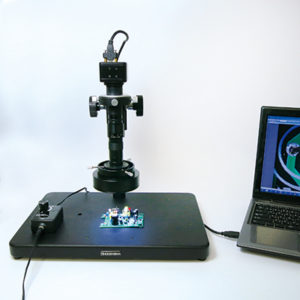 |
Using a microscope with this aperture, we will compare the images when the lens is wide open and when the lens is closed.
(Reduce aperture to increase depth of field.)
Tilt the 0.5mm pitch glass scale at 45 degrees and observe it from above.
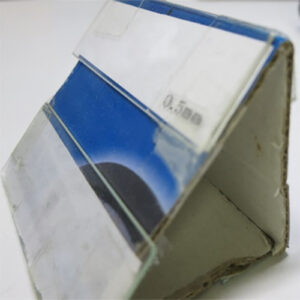 |
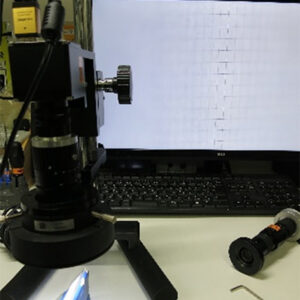 |
(1) Depth of focus/depth of field at 50x
| <When opening the aperture> | <When narrowed to maximum> |
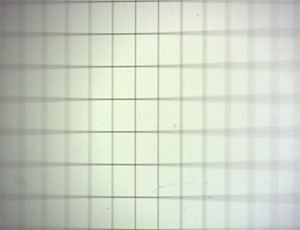 |
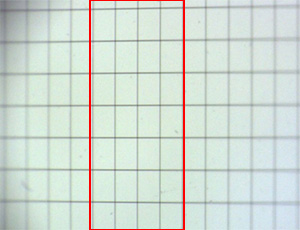 |
How much focus there is depends on each individual
Since it is tilted at 45 degrees, multiplying by 1/1.41 gives the depth of stroke.
If you judge 4 steps (= 2 mm) to be correct then the depth of field is 2 mm x (1/1.41) = 1.42 mm.
Tilt the board at a 45 degree angle and observe it at 50x magnification.
(1.6 mm x 0.8 mm electronic components are spaced 1 mm apart.)
| <When opening the aperture> | <When narrowed to maximum> |
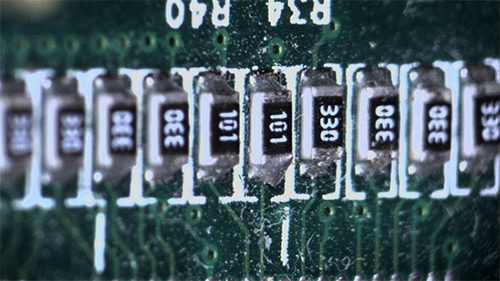 |
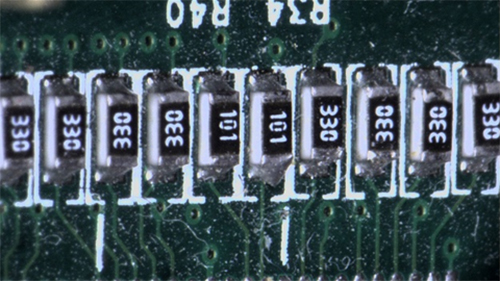 |
As reference, I also confirmed at 100x.
Because of the high magnification, the glass scale was changed to a distance of 0.2mm.
| <When opening the aperture> | <When narrowed to maximum> |
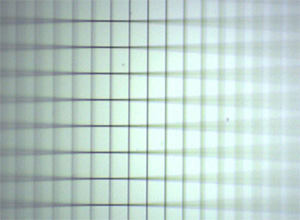 |
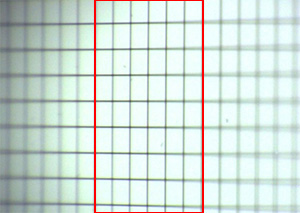 |
Please note that if you close the aperture, the lens will become darker and the resolution will decrease.
3.Depth of focus/technique to increase depth of field
◆Explanation: About the focal depth/depth of field of the lens
Before introducing this trick, I want to explain the lens’s depth of focus.
Depth of focus is also expressed in DOF (Depth of Focuse).
Case in air(N=1)
DOF=(0.55/(2×NA²))+(1/M×K/NA)
Formula explanation)
- The first item is “an item defined by resolution.”
- The second item “K” is “a constant determined by the resolution of the observer’s eye” and varies from person to person.
- “M” is the “overall magnification of the lens”.
What we can say from this is that the only way to increase depth of focus is to decrease magnification or decrease NA.
At the same magnification, the only option is to reduce NA.
The photos below are from the same manufacturer and product line, with the megapixel-compatible lens on the left and the lower-resolution all-purpose lens on the right.

When comparing lenses with the same magnification and focal length, general purpose lenses have a deeper depth of focus.
The only way to reduce NA with the same lens is to narrow the aperture.
If the lenses are different and the magnification is the same, the longer the focal length, the lower the NA, and the deeper the depth of focus.
◆Introduction to tips: “Aperture” and “Digital Zoom”
However, because both “aperture” and “digital zoom” tend to reduce resolution, we recommend using a 4K (8 million pixel) camera and a lens with equivalent high resolution. response.
I attached a 10 million pixel compatible 50mm lens to a 4K (8 million pixel) camera and attached a close-up ring for 50x macro photography for comparison.
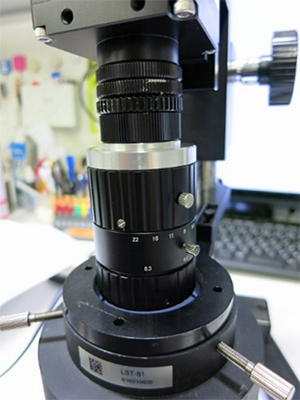
Take a photo of the same board as above under the same conditions.
(1) AT 50X, ADJUST DEPTH OF FOCUS/DEPTH OF FIELD JUST BY CHANGING LENS APERTURE
| <When opening the aperture> | <When narrowed to maximum> |
 |
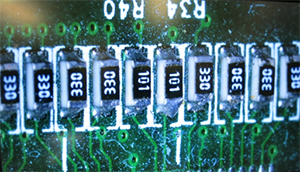 |
(2) After adjusting the digital magnification to 50x, adjust the depth of focus/depth of field using the lens aperture.
| <When opening the aperture> | <When narrowed to maximum> |
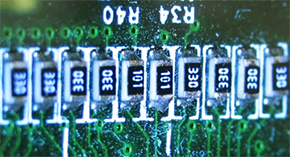 |
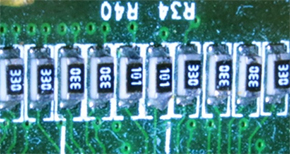 |
(3) Benefits when using the procedure
Since it uses a fixed focus lens, zoom is not possible.
However, unlike macro zoom lenses, the working distance is not fixed, so there is flexibility in terms of W.D. longer, shrinking the system and nuances of depth of field.
Depending on lens selection, any (fixed) magnification can be set from 5x to 50x.
4.Conclude
The area in front and behind a point that is completely in focus and slightly out of focus is called depth of field.
How realistic it is depends on each individual.
By using a combination of “aperture” and “digital zoom”, a deep depth of focus/depth of field can be achieved even with a simple microscope built with a lens fixed focal length.



